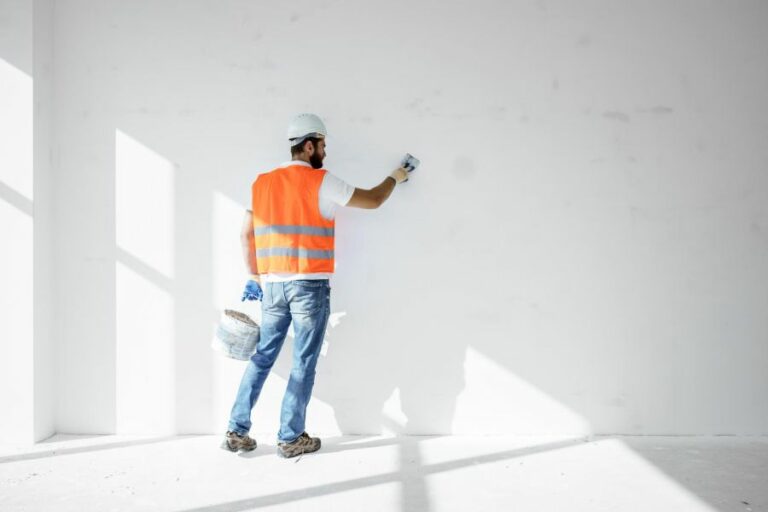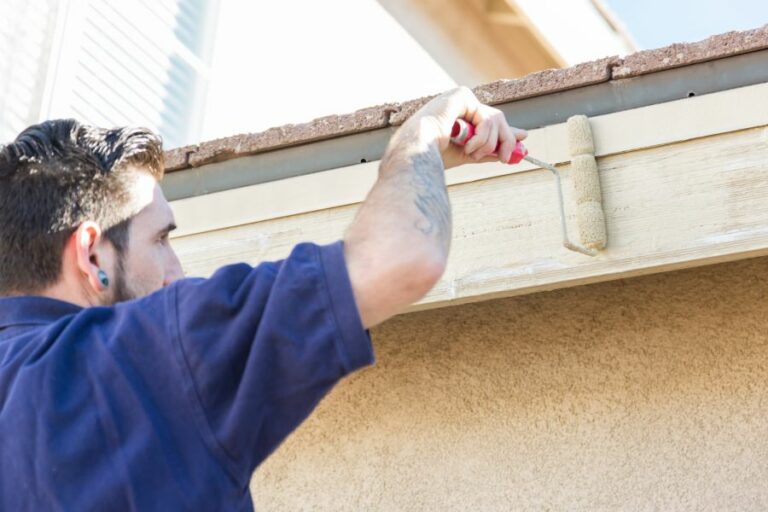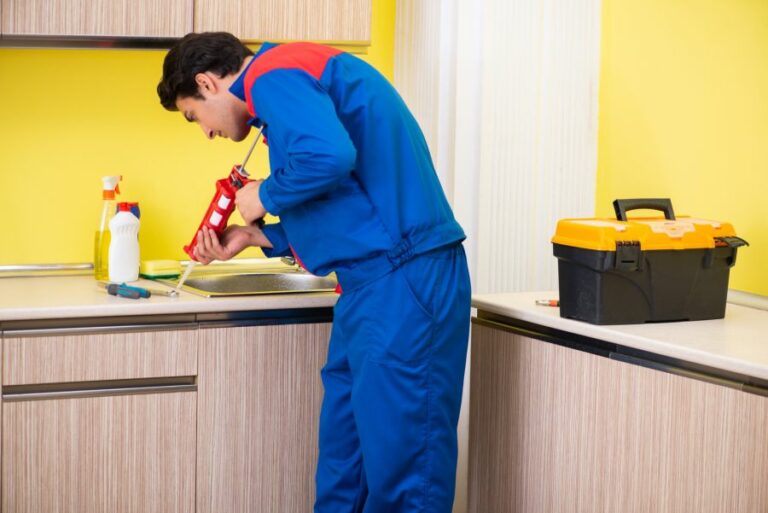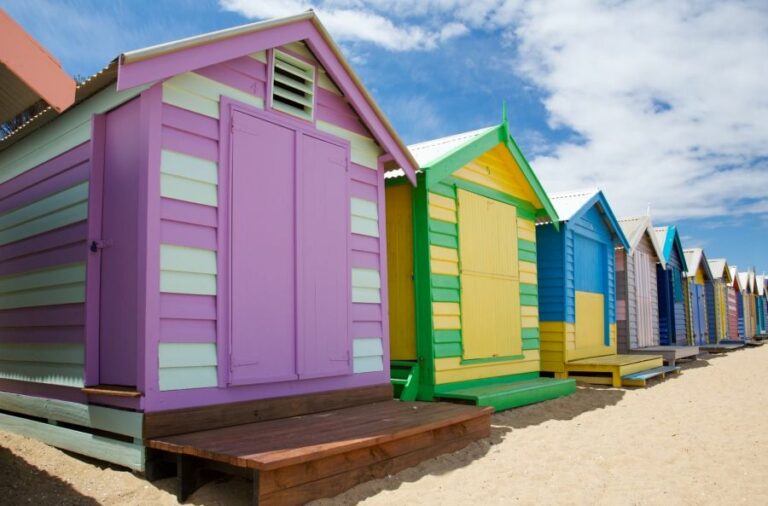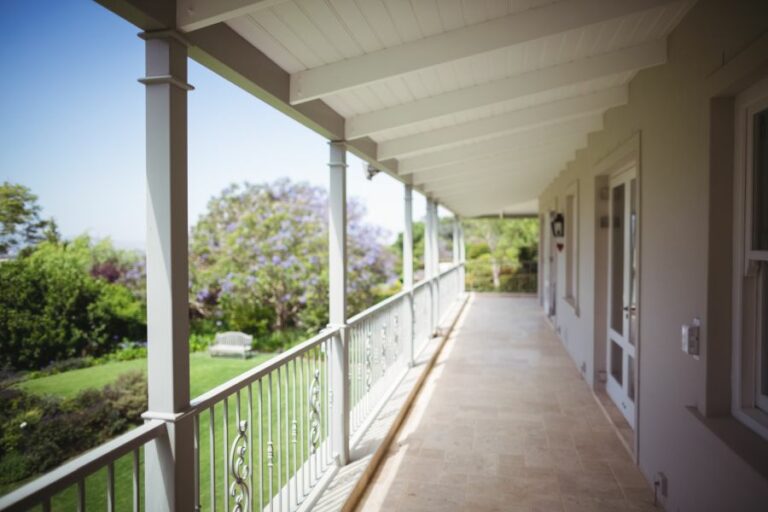Solve Efflorescence Issues Prior To Painting. What Pros Say
Efflorescence can be a major headache when it comes to painting, but worry not! We have the perfect strategy to tackle this issue head-on, ensuring a pristine and lasting paint job. By taking the right steps to identify and treat the underlying cause of efflorescence, you can confidently move forward with your painting project, knowing the results will be nothing short of spectacular.
Solve efflorescence issues before painting:
To solve efflorescence issues before painting, identify and address the moisture source causing salt deposits on the masonry or concrete surface. Clean the surface by removing loose efflorescence and using a masonry cleaner. Apply a sealant or waterproofing agent, then prime the surface with an alkaline-resistant primer. Choose paint specifically designed for masonry applications and apply in thin, even coats, following the paint manufacturer’s instructions.

Are you facing persistent efflorescence issues before painting? Fear not! Our comprehensive guide offers valuable insights and practical solutions to tackle these problems with ease. Read on to discover how you can effectively address efflorescence issues and ensure a long-lasting and beautiful paint job!
Contents
- 1 Address Efflorescence Problems Before Painting
- 2 Efflorescence Neutralization Techniques
- 3 Top Paint Choices to Prevent Efflorescence
- 4 Permanent Efflorescence Removal Methods
- 5 Prevention Tips for Efflorescence Recurrence
Address Efflorescence Problems Before Painting
• Understanding Efflorescence
Efflorescence is a common issue faced by many homeowners, particularly those with masonry or concrete surfaces. It is characterized by the presence of white, crystalline deposits on surfaces such as brick, concrete, and stucco.
These deposits consist of salts that have been pushed to the surface due to the presence of moisture inside the masonry materials.
When painting over a surface affected by efflorescence, it is crucial to address the issue first. If left untreated, efflorescence can not only compromise the appearance and adhesion of the paint but also degrade the structural integrity of the underlying material.
• Identifying the Source of Moisture
Before you can effectively address efflorescence, you must first identify the source of the moisture that is causing the salts to migrate to the surface. Common sources of moisture include:
- Groundwater seepage
- Leaking pipes and fixtures
- Poorly graded landscaping, causing water to pool near foundation walls
- High levels of humidity
- Lack of proper ventilation
Once the source of the moisture has been identified, it should be remedied to prevent further efflorescence from occurring.
• Cleaning the Surface
After addressing the moisture source, it is essential to clean the effloresced surface thoroughly before applying any paint. To do this, follow these steps:
- Remove loose efflorescence. Before using any cleaning agents, it is crucial to remove loose efflorescence deposits by either brushing the surface with a stiff-bristle brush or using a power washer.
- Apply a masonry cleaner. After removing the loose deposits, apply a masonry cleaner specially designed for efflorescence removal, such as muriatic acid or a trisodium phosphate (TSP) solution. Always follow the manufacturer’s instructions for application, dilution, and rinsing.
- Rinse thoroughly. To ensure that all the cleaning agents and efflorescence deposits are removed, rinse the surface thoroughly with clean water. Allow the surface to dry completely before proceeding to the next step.
• Applying a Sealant or Waterproofing Agent
To prevent moisture from seeping into the surface and causing further efflorescence, it’s essential to apply a sealant or waterproofing agent to the masonry.
Products such as silane/siloxane-based sealers and acrylic coatings can be used to create a barrier that repels water while allowing the masonry to “breathe,” thereby preventing the buildup of moisture inside the material.
Follow the manufacturer’s instructions for the application, coverage rates, and curing times of the specific product you choose.
• Priming the Surface
Priming the surface is a critical step in ensuring the proper adhesion of the paint to the masonry surface. Using a high-quality, alkaline-resistant primer specifically designed for masonry surfaces can help combat any residual efflorescence and create a stable substrate for the paint to adhere to.
• Choosing the Right Paint for Masonry
Selecting the proper paint for masonry surfaces is essential for long-lasting results and can also help prevent efflorescence in the future.
Look for paints specifically designed for masonry applications, such as elastomeric paints and acrylic-latex paints, which provide a durable and breathable layer that can accommodate the natural movement of masonry materials.
• Applying the Paint
With all the necessary preparations in place, it’s time to apply the paint. Follow these guidelines for best results:
- Observe proper drying times. Ensure that the surface, primer, and sealant are all entirely dry before applying paint. Look for any signs of remaining moisture or efflorescence, and address them as necessary before proceeding.
- Apply the paint in thin, even coats. Two or more thin coats of paint are always better than one thick coat.
- Paint using the appropriate tools. Rollers and brushes specifically designed for masonry surfaces should be used to get a smooth, even finish that can withstand the rigors of a masonry surface.
- Follow the paint manufacturer’s instructions. Always adhere to the recommended coverage rates, drying times, and other instructions provided by the paint manufacturer to ensure your paint job lasts as long as possible.
In conclusion, solving efflorescence issues prior to painting is essential to achieving a long-lasting, attractive paint job.
By addressing moisture sources, properly cleaning the affected areas, and using the right products, you can mitigate efflorescence problems and ensure a durable, efflorescence-free finish on your masonry surfaces.
Efflorescence Neutralization Techniques
Efflorescence is a common problem faced by homeowners and builders alike, where unsightly white, powdery deposits form on the surface of materials like brick, concrete, and stucco.
Although it doesn’t pose any immediate threat to the structural integrity, efflorescence can be an indication of underlying moisture issues and may lead to aesthetic and surface damage.
• Understanding the Cause of Efflorescence
Before diving into the methods of neutralizing efflorescence, it’s important to understand the root cause. Efflorescence occurs when water-soluble salts present in materials like concrete and brick are brought to the surface due to moisture infiltration.
When the moisture evaporates, it leaves behind the salts, resulting in a crusty, white residue.
To effectively neutralize efflorescence, it’s crucial to address the underlying moisture issue first. This usually includes repairing leaks, improving drainage systems, and addressing any other potential sources of water infiltration.
• Chemical Treatments for Neutralizing Efflorescence
One of the most effective ways to remove efflorescence is through the use of chemical treatments. When selecting a chemical solution, it’s important to opt for one specifically designed to combat efflorescence.
– Muriatic Acid
Muriatic Acid, also known as hydrochloric acid, is a powerful and common efflorescence-removal substance. It should be used with caution, as it can be harmful to both users and materials if not used correctly.
To use muriatic acid, follow these steps:
- Dilute the acid with water, usually in a 1:10 ratio (one part acid to ten parts water). Always add the acid to the water, never the other way around.
- Apply the solution to the affected area with a brush or sprayer, taking care to avoid contact with skin and respiratory exposure.
- Let the solution sit for a short period, typically 5-10 minutes, to allow the acid to react with the efflorescence.
- Rinse the area thoroughly with water to remove any acidic residue and neutralize the surface.
Always follow the manufacturer’s instructions when using muriatic acid, and ensure to use protective gear like gloves, goggles, and a respirator.
– Alternative Chemical Solutions
There are alternative, less aggressive chemicals available for efflorescence removal, such as phosphoric or sulfamic acids. These milder acids are less likely to cause damage to the surface material and pose fewer safety risks to the user.
Follow the same steps as with muriatic acid, and always consult the manufacturer’s instructions for proper application and safety precautions.
• Mechanical Removal Methods
If chemicals are not an option or if efflorescence is particularly stubborn, mechanical removal methods can be effective.
– Sandblasting
Sandblasting uses a high-pressure stream of abrasive material to remove surface contaminants, including efflorescence. This method can be effective, but it may result in damage to the surface material if not properly executed.
Before opting for sandblasting, always consult a professional to ensure it’s a suitable treatment for the affected surface.
– Power Washing
Power washing, or pressure washing, utilizes a high-pressure stream of water to remove efflorescence and other surface contaminants. While less aggressive than sandblasting, power washing still has the potential to damage the surface material if not done correctly.
Exercise caution when using this method, and carefully follow the manufacturer’s guidelines for the pressure washer being used.
– Wire Brushing
For less severe efflorescence cases, simple wire brushing may be sufficient to remove the deposits. The process involves manually scrubbing the affected surface with a stiff-bristled wire brush.
While this method may not remove efflorescence as thoroughly as chemical treatments, it’s an excellent option for those looking for a non-chemical solution.
• Prevention Strategies
Once the efflorescence has been neutralized and removed, implementing prevention strategies can help minimize its recurrence.
- Improve the overall moisture management of the building, including proper sealing, drainage, and ventilation.
- Utilize water-resistant materials, such as waterproof admixtures in concrete, to decrease the chances of efflorescence by limiting water ingress.
- Regularly inspect the building for potential moisture issues and address them promptly.
In conclusion, neutralizing efflorescence involves a combination of moisture control, chemical treatments, and mechanical removal methods.
By employing a targeted approach and implementing preventative strategies, it’s possible to minimize and eliminate efflorescence, keeping your building surfaces clean and aesthetically pleasing.
Top Paint Choices to Prevent Efflorescence
Efflorescence is a common problem that plagues many homeowners and contractors throughout the world. It occurs when water-soluble salts present in masonry materials and cement are carried to the surface by moisture.
Upon evaporation, the salts form unsightly crystalline deposits that range from white to gray, yellow, and even green.
• Understanding Efflorescence: A Brief Overview
Efflorescence can occur on masonry surfaces such as brick, concrete, and stone, among others. It primarily happens due to the capillary action of water moving through porous materials. This, in turn, leads to mineral deposits getting carried to the surface.
The efflorescence can result in discoloration, degradation of the surface, and in severe cases, loss of structural integrity.
The key to successfully treating efflorescence lies in addressing the root cause and preventing further water intrusion. The application of high-quality paint or coating can play a crucial role in mitigating this issue.
• A Look at Different Paint Types: Pros and Cons
– Acrylic Latex Paint
Acrylic latex paint is a water-based paint made from acrylic resins. It offers good adhesion, excellent color retention, and quick drying.
Pros:
- Water clean-up
- Low odor
- Good exterior durability
- Good gloss and color retention
Cons:
- May be less effective in severe efflorescence cases if not used with a proper primer
– Elastomeric Paint
Known for its elasticity, elastomeric paint is a high-performance, water-resistant coating designed to expand and contract along with the substrate, resulting in a durable, long-lasting finish.
Pros:
- Excellent adhesion
- Superb water resistance
- Resistant to cracking
- High film thickness to bridge minor gaps on the surface
Cons:
- Longer drying time
- Requires professional application for best results
– Silicate Paint
Silicate paint, also known as mineral paint or masonry paint, is an inorganic, mineral-based paint that chemically reacts with the substrate, creating a breathable and durable surface.
Pros:
- Highly resistant to efflorescence
- Breathable, allowing water vapor to escape
- Long-lasting and weather-resistant
- Excellent color retention
Cons:
- Limited color range
- Requires a specific type of primer
• Recommended Steps to Apply Paint Over Efflorescence
To ensure the best results with your chosen paint, follow these crucial steps:
- Address the underlying problem: Evaluate the cause of efflorescence leakages, faulty gutters, or poor drainage and take necessary corrective measures.
- Prepare the surface: Remove any loose, chalking, or peeling paint from the affected area. Clean the surface with a stiff brush or power washer and allow it to dry completely.
- Apply a sealer or a primer: Choose a high-quality water-repellent sealer or primer specifically designed for efflorescence prevention. Follow the manufacturer’s instructions for application.
- Choose the right paint: Based on your analysis and requirements, select a paint type that best suits your situation. Ensure you buy a premium quality product with a long-lasting finish and anti-efflorescence properties.
- Apply the paint: Following the manufacturer’s guidelines, apply your chosen paint using a brush, roller, or sprayer to achieve an even, durable finish. Allow adequate drying time between coats.
– My Personal Recommendation: Silicate Paint
In my experience, silicate paint is the most effective option for preventing efflorescence. Its mineral composition ensures a strong bond with the substrate while allowing any trapped moisture to escape. This prevents the build-up of water-soluble salts that cause efflorescence.
Furthermore, silicate paint’s long-lasting durability, weather resistance, and excellent color retention make it a top choice for many homeowners and contractors.
• Conclusion
Choosing the best paint to stop efflorescence is a critical step in protecting your property from damage, discoloration, and degradation. By addressing the root cause of the problem, preparing the surface, and selecting the right paint, you can safeguard your walls from future efflorescence issues.
Silicate paint is my top choice, offering unparalleled performance in preventing efflorescence and ensuring a durable, beautiful finish. Remember, investing in high-quality paint, primer, and application techniques will yield long-lasting results and protect your investment for years to come.
Permanent Efflorescence Removal Methods
Efflorescence is a common issue in the construction industry that appears as an unsightly white, powdery substance on concrete, brick, or masonry surfaces. Correctly identifying and addressing the problem can be a challenging and time-consuming task.
• Understanding the Causes of Efflorescence
The primary cause of the efflorescence is moisture infiltration, which dissolves the salts present in the materials of a masonry structure. When the moisture evaporates, these salts are left on the surface, resulting in a visible deposition.
Consequently, controlling moisture migration is vital in preventing and treating efflorescence.
1. Assess the Building’s Drainage System
A poorly designed or maintained drainage system can contribute significantly to the appearance of efflorescence. Examine your gutters, downspouts, and other water management components for blockages, leaks, and other issues that might result in excessive moisture penetration.
2. Inspect for Plumbing Leaks
Another common source of moisture infiltration is plumbing leaks within the structure. Carefully examine your plumbing system, particularly areas near masonry and concrete surfaces, for signs of leakage. An experienced plumber can assist in identifying and repairing hidden leaks.
3. Evaluate Exterior Walls
Examine the exterior walls of your building for cracks, faulty mortar joints, or inadequate flashing that might allow moisture infiltration. Fix any identified vulnerabilities to prevent further moisture penetration.
4. Moisture Trapping Materials
Construction materials with low permeability, such as impermeable paint or sealers, can trap moisture within the masonry, making efflorescence more likely to occur. In such situations, reconsider your choice of materials and opt for more breathable options.
• Removal Techniques for Existing Efflorescence
Once you have addressed the factors contributing to efflorescence, it’s time to employ removal techniques to eliminate the powder from your surfaces.
5. Dry Brushing
For mild efflorescence cases, brushing the powdery deposits with a stiff nylon or natural bristle brush can be an effective method of removal. Ensure not to use metal brushes, as they can scratch and damage your masonry surfaces.
6. Water Washing
A gentle method to remove efflorescence is washing down the affected surfaces with water. However, this approach should only be utilized when the temperature is above freezing and the surfaces have a chance to dry thoroughly after washing.
7. Chemical Cleaning
If efflorescence persists despite dry brushing and water washing attempts, chemical cleaning solutions designed specifically for efflorescence removal are available. These generally contain mild acids, such as acetic, citric, or hydrochloric acid.
However, be sure to follow the manufacturer’s instructions carefully and test the solution on a small, inconspicuous area before treating the entire surface to avoid any potential damage.
• Preventative Measures for Efflorescence
After successfully removing efflorescence, it’s essential to take preventative measures to ensure this issue doesn’t recur.
8. Damp-Proofing
Damp-proofing your building will reduce the likelihood of efflorescence forming. Improved drainage, the use of vapor barriers, and proper sealing of masonry materials can all contribute to preventing efflorescence. Keep in mind that a holistic approach to moisture management will yield the best results.
9. Select Low-Salt Building Materials
Opt for masonry materials that are low in soluble salts when possible, as high salt levels contribute to efflorescence risk. Additionally, consider using admixtures in your mortar and concrete, specifically designed to minimize efflorescence formation.
10. Utilize Controlled Curing Methods
During the curing process of concrete or mortar, excessive moisture loss can lead to efflorescence formation. Successful controlled curing methods involve employing moisture-retaining techniques, such as misting, suitable curing compounds, or covering the newly placed concrete with plastic sheets.
• Conclusion
Eliminating and preventing efflorescence is a vital aspect of maintaining the visual appeal and longevity of your masonry and concrete surfaces.
By thoroughly assessing the causes and implementing appropriate removal and prevention methods, you can permanently address this common construction issue.
Prevention Tips for Efflorescence Recurrence
• Understanding Efflorescence
Efflorescence is the appearance of white, chalky deposits on the surface of porous materials like concrete, brick, and stucco. It occurs when water seeps through these materials, dissolving minerals and salts, which later form crystals as the water evaporates.
The key to preventing efflorescence lies in understanding its causes and employing appropriate measures to address them.
• Addressing the Root Causes
– Proper Drainage
One of the primary sources of efflorescence is excess water infiltration. To prevent it, it is crucial to have an efficient drainage system. This includes designing and installing a system that directs water away from vulnerable surfaces.
Some effective drainage techniques include:
- Sloping: Steeper slopes help water drain effectively.
- Swales and ditches: These are shallow, wide trenches that channel water away from structures.
- French drains: Drains composed of perforated pipes laid in gravel-filled trenches.
– Waterproofing
Waterproofing creates a barrier that prevents water from penetrating porous materials. It is essential to apply waterproofing solutions to surfaces exposed to moisture, such as basements, exterior walls, and roofs.
Some common waterproofing products include:
- Waterproof coatings: These are applied directly to surfaces and form a flexible, watertight membrane that protects against water infiltration.
- Water-repellent sealers: Also applied directly to surfaces, water-repellent sealers prevent water from penetrating without affecting the material’s look or feel.
– Proper Material Selection
Choosing the right materials is vital in avoiding efflorescence. Select materials with low water absorption and high-density properties, such as:
- Concrete blocks: Opt for blocks with low absorption rates.
- Mortar: Choose a type S or M mortar that offers better resistance to water penetration.
- Brick: Use a high-density brick with low porosity.
– Reducing Salt Content
Minimizing the salt content in concrete and mortar mixes helps in preventing efflorescence. Some ways to achieve this include:
- Using potable water: Choose water with low salt content for mixing; tap or filtered water is preferred.
- Rinsing off admixtures: Ensure admixtures are free from salt residue.
- Avoiding aggregates with high salt content: Opt for aggregates like sand and crushed stone with minimal salt content.
• Maintenance and Monitoring
Stopping efflorescence is not a one-time task. Regular maintenance and monitoring of structures are key in preventing their recurrence.
– Inspection
Conduct regular inspections of areas prone to efflorescence, such as basements, tuck-pointed walls, and decks. Look out for early signs of efflorescence, such as damp spots or discoloration.
– Cleaning
If efflorescence appears, address it promptly. Early intervention can prevent severe cases and reduce the chances of them recurring:
- Dry brushing: Use a stiff-bristled brush to remove surface efflorescence.
- Diluted vinegar solution: For light cases, clean the affected area with a vinegar and water solution, followed by rinsing.
- Muriatic acid: Use muriatic acid for severe cases, but exercise caution and follow the manufacturer’s instructions carefully.
– Ventilation
Ensure proper ventilation in areas prone to efflorescence, such as basements and crawl spaces. Adequate airflow reduces moisture levels and hinders the formation of efflorescence.
– Regular Maintenance
Keeping structures in good condition by performing routine maintenance tasks helps in preventing efflorescence. This includes:
- Clearing gutters and drains: Regularly remove debris from gutters and drains to ensure proper drainage.
- Sealing cracks: Routinely inspect surfaces for cracks and seal them immediately to prevent water infiltration.
- Reapplying waterproofing products: Reapply waterproofing solutions as needed, according to the manufacturer’s recommendations.
• Conclusion
Efflorescence can be a persistent issue if not addressed appropriately. By understanding the root causes and employing preventative measures, it is possible to stop efflorescence from returning.
Remember, proper drainage, waterproofing, material selection, and routine maintenance are critical components of a successful efflorescence prevention strategy.
| How do I stop efflorescence from returning? | |
|---|---|
| 1. Identify and address the source of moisture | Fix any leaks, cracks, or drainage issues to prevent water from entering and collecting in the affected area. |
| 2. Properly clean the affected area | Use a stiff brush and water, or a mild acidic cleaner, to remove existing efflorescence before sealing. Allow the area to dry thoroughly before proceeding. |
| 3. Apply an appropriate sealer | Choose a sealer specifically designed to combat efflorescence, and apply it according to the manufacturer’s instructions. This will create a barrier that prevents water and salts from reaching the surface. |
| 4. Consider using a breathable sealer | Breathable sealers allow moisture vapor to pass through, preventing moisture buildup and reducing the risk of efflorescence. |
| 5. Maintain preventative measures | Regularly inspect and address any new sources of moisture, and reapply your chosen sealer as needed to keep it effective against efflorescence. |

